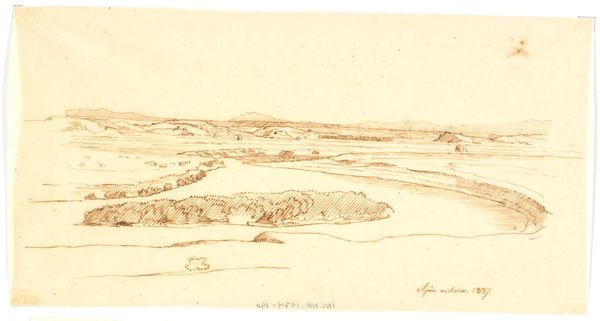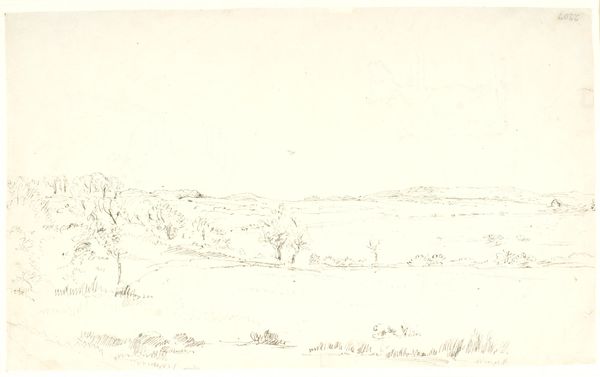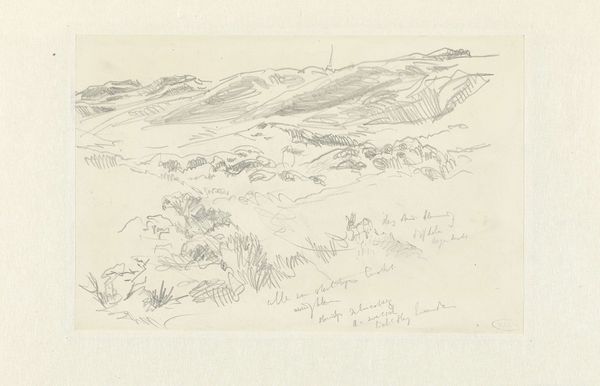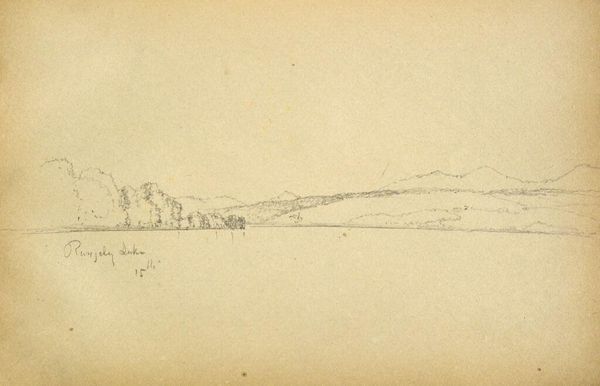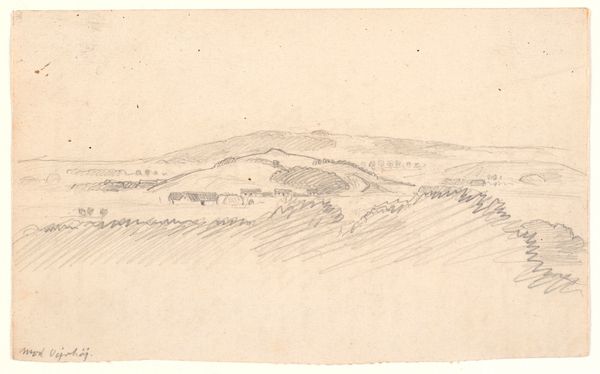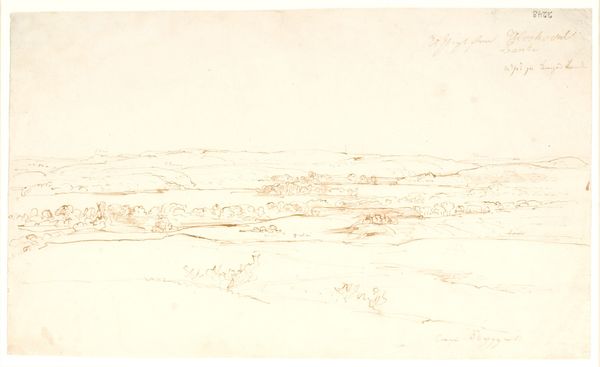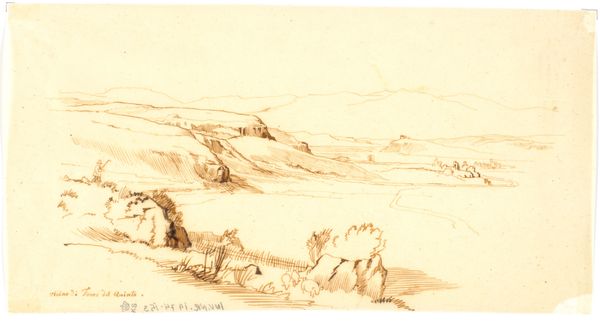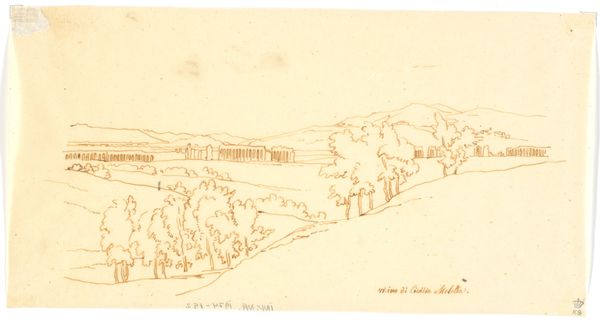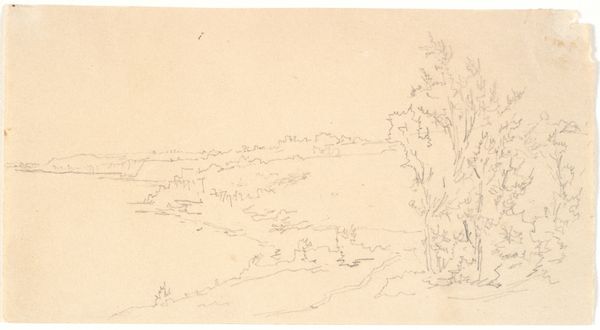
drawing, paper, pencil
#
drawing
#
landscape
#
paper
#
romanticism
#
pencil
Dimensions: 114 mm (height) x 218 mm (width) (bladmaal)
Curator: At first glance, this scene feels so tranquil, almost ethereally silent. The subdued palette emphasizes the gentle undulation of the Italian countryside. Editor: Precisely, the artwork before us, titled "Vicino di Cicilia Metella," was created in 1837 by Martinus Rørbye, a Danish Golden Age painter known for his Romantic landscapes. Crafted with pencil on paper, this drawing encapsulates the era's fascination with both nature and the classical world. It reflects the way that Rome was, and still is, perceived as a cultural center by artists from around the world. Curator: You can see the hand of Romanticism here in the wistful yearning for distant times and places. Rørbye visited Italy in the 1830s and many artists and writers visited the country at that time in order to encounter classical remains first-hand. It allowed them to engage with both nature and history and explore their complex interplay. Editor: I agree; the technique itself is telling. Note the stark contrast, the precision of line, and the careful layering to create depth. There’s a very palpable, considered sense of visual ordering on display that pulls one’s focus across the page. Rørbye's masterful application of visual tools is notable even here, in this unassuming sketch. Curator: This work feels like more than just a pretty landscape though. It feels almost revolutionary in the sense that artists from the periphery were appropriating and interpreting cultural heritage through their own lenses. They created their own narrative by seeing with fresh eyes. Editor: Absolutely, the strategic framing gives order to a landscape that in actuality resists ordering. It could be interpreted as imposing a northern European sensibility onto the classical landscape. Curator: The way Rørbye frames the composition—the deliberate positioning of the trees against the pale horizon, and even the choice to work with pencil on paper—speaks volumes about the intersection of culture, identity, and the Romantic pursuit of beauty. Editor: Well, whatever its cultural position, I think we can both agree on the profound tranquility communicated by its visual arrangement. Curator: Indeed. There's a contemplative power here. Editor: I concur. A lasting image to consider on our journey through this museum.
Comments
No comments
Be the first to comment and join the conversation on the ultimate creative platform.

